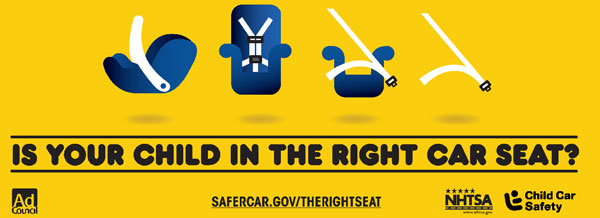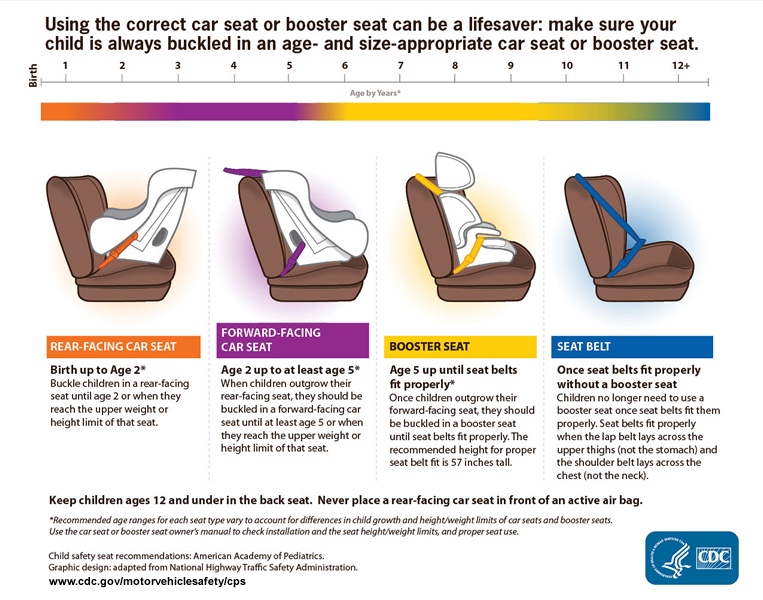Child Safety Seats
- Details
- Parent Category: Enforcement
- Traffic
- Hits: 14189
In This Page |
 |
Used Child Safety Seats
Experts Advise Against Utilizing Used Child Safety Seats
Many people purchase used child safety seats at garage sales, flea markets, second-hand or resale shops. Unknowingly, you may be putting your child at risk.
Will County Sheriff’s Office cautions against buying a used seat for many reasons. Among them are:
- The used seat purchased may have been involved in a crash.
- A used child seat may be missing parts and instructions.
- A used child seat could be recalled.
- The child seat may not meet current safety standards.
- If you are having difficulty installing your seat, or would like us to check you seat for correct installation or recalls, please call us at 815.727.3263.
Child Passenger Safety
Illinois Child Passenger Protection Act Illinois law requires the driver and all passengers, regardless of age or location in the vehicle, are required to be secured in a seat belt or an appropriately approved child restraint system. Any person transporting a child under the age of 8 years shall be responsible for securing that child in an appropriate child restraint system, more commonly called a child safety seat. The parent or legal guardian of the child under the age of 8 years shall provide a child restraint system to any person who transports his or her child. A child weighing more than 40 pounds may be transported in the back seat of a motor vehicle while wearing only a lap belt if the back seat of the motor vehicle is not equipped with a combination lap and shoulder belt.
Violators of the Child Passenger Protection Act are subject to a fine for the first offense and are eligible for court supervision if they provide the court with documented proof from a child safety seat technician of a properly installed child restraint system and completion of an instructional course on the installation of that restraint system. A subsequent violation is a petty offense with a $200 fine and not eligible for court supervision.
Child Safety Seat Guidelines
Always read and follow the child safety seat and vehicle manufacturer’s instructions for installation and height/ weight guidelines.
 Newborn - 12 months - Children under age 1 and weighing less than 20 pounds should always ride in a rear-facing infant seat or a convertible seat used rear-facing.
Newborn - 12 months - Children under age 1 and weighing less than 20 pounds should always ride in a rear-facing infant seat or a convertible seat used rear-facing.
- Never install a rear-facing safety seat in front of an active airbag.
- Rear-facing safety seats should recline 30-45 degrees.
- The child’s head must be at least 1 inch below the top of the safety seat when rear-facing.
- Use the harness straps/slots at or below shoulder level when rear-facing.
- Harness straps must be snug on the child; the harness clip should be at armpit level.
Ages 1 - 4 - Children should remain in a rear-facing safety seat until age 2, or until they are at the upper height or weight limit of the seat. When a child outgrows a rear-facing safety seat, he or she may transition to a forward-facing seat with a harness system.
- Use the internal harness system until the upper height or weight limit is reached.
- Use harness straps/ slots at or above shoulder level when forward-facing.
- Harness straps must be snug on the child; the harness clip should be at armpit level.
- The top of the child’s ears should not be above the top of the car seat when forward-facing.
Ages 4 - 8 - Children should be secured in a forward-facing safety seat with an internal harness system until they reach the upper height or weight limit allowed by the car seat manufacturer. When a child outgrows the forward-facing seat, he or she may transition to a belt-positioning booster seat.
- Booster seats must be used with the vehicle’s lap and shoulder belt, never just a lap belt.
- The lap belt should lie low across the upper thighs, not the stomach. The shoulder belt should rest snugly across the shoulder and chest, not across the neck or face.
- The top of the child’s ears should not be above the top of the back of a booster seat with a back.
- If using a backless booster seat, the vehicle’s head restraint must be positioned properly.
- Secure the booster seat with the vehicle’s seat belt when not in use.
Ages 8 - 12 - Children should stay in a belt-positioning booster seat until they are tall enough to properly fit in an adult lap/shoulder belt.
- The vehicle lap belt must lie low across the upper thighs, not the stomach. The shoulder belt should rest snugly across the shoulder and chest, not across the neck or face.
- The child’s back and hips should be against the back of the vehicle seat, without slouching.
- Knees should bend easily over the front edge of the vehicle seat with the feet flat on the floor.
The Will County Sheriff’s Office offers free child safety seat inspections on weekdays at the Patrol Division Headquarters, 16909 w. Laraway Rd., Joliet, IL 60433.
To schedule a child safety seat inspection, please call the Traffic Section at 815-727-3263.
Child Safety Seat Mistakes
Over 95% of Child Seats are installed wrong in vehicles.
Is yours in right?
The Ten Most Common Mistakes Made
- Seat Belt Not Securing Child Safety Seat Tightly
- Child Facing Forward Too Soon
- Harness Straps in Wrong Slots
- Locking Clip Not Used When Required
- Retainer Clip Not Used Correctly
- Harness Straps Not Tight Enough
- Improper Child Seat for Child
- Using a Recalled or Unsafe Seat
- Child Seat Incompatible with Vehicle Seat/Air Bag
- “Foreign Objects” Used to Secure A Child Seat

